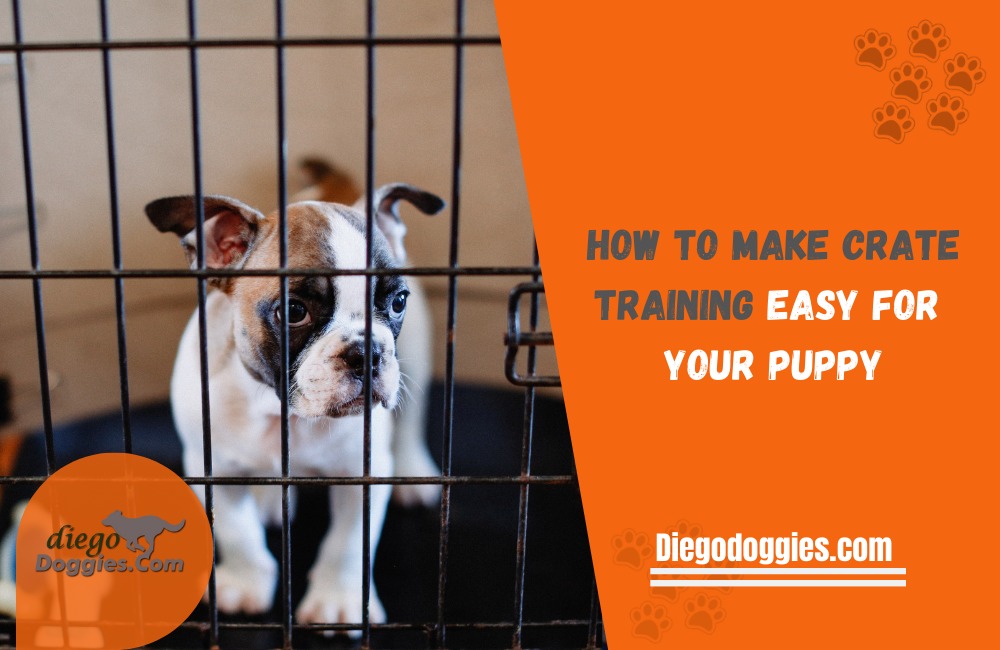Crate training also called “confinement training” is the process of teaching your puppy to accept spending time in a crate with a view to house training your puppy. Check the below for how to crate train a puppy.
1. How to Crate Train a Puppy – An introduction
Crate training is the process of teaching your puppy to be comfortable in a crate. The goal is to have your puppy see the crate as a safe and secure place. Dogs will not normally soil their sleeping quarters.
2. The Goal Of Puppy Training
Crate training is the process of teaching your puppy to accept being in a crate for periods of time. The goal is to get your puppy used to being in the crate so that he or she feels comfortable and safe inside it.
3. How Long Do Puppies Need House Breaking Training?
Crate training is a process that takes time and patience. It is important to introduce your puppy to his crate gradually, starting with short periods of time spent in the crate and working up to longer periods.
4. How Often Should Puppy Be In Crate
Crate training is one of the best ways to potty train your puppy. Crate training is when you confine your puppy to a small area, such as a crate or pen, for short periods.
The goal of crate training is to get your puppy used to being in a confined space so that he can learn to hold his bladder and not have accidents in the house. Crate training can be difficult for some puppies, but with a little patience and consistency, it can be done!
Puppies may need to be crate trained for several months until they are old enough to hold their bladder for longer periods of time. During crate training, your puppy should only be in his crate for short periods of time and should always have access to food and water.
Crate training can be difficult for some puppies, but with a little patience and consistency, it can be done! They will become adult dogs and feel confident with their housebreaking.
5. What Are The Pros And Cons Of Puppy Training?
Pros
- Crate training can help your puppy learn to hold his bladder for longer periods.
- Crate training can help your puppy learn to stay calm and quiet when left alone.
- Crate training can help reduce separation anxiety in puppies.
- Crate training can help with potty training by teaching your puppy that he needs to hold his bladder until he is outside.
Cons
- Crate training can be difficult for some puppies.
- Crate training can be time-consuming.
- Crate training may not work for all puppies.
- Crate training can be stressful for puppies if not done correctly.
6. Should My Dog Always Sleep In A Crate?
No, your dog does not always have to sleep in a crate. Crate training is the process of teaching your puppy to be comfortable in a crate. The goal is to have your puppy see the crate as a safe and secure place.
Crate training can take several weeks, but If you are thinking about crate training your puppy, it is important to research and talk to your veterinarian first.
Crate training can be a great way to potty train your puppy and help with separation anxiety, but it is not right for every puppy. We have applied a comprehensive list of resources.
7. Crate Training FAQs – How to Crate Train a Puppy
Write a paragraph about the above paragraph title including ten FAQs with answers.
FAQs about Crate Training:
7. When To Stop House Breaking Training – Knowing When Your Puppy Is Ready
Crate training is the process of teaching your puppy to be comfortable in a crate. Crate training can take several weeks, but it is important to be patient and consistent with the process. Once your puppy is Crate trained, you can start leaving them in the crate for longer periods of time.
As your puppy gets older, they will be able to hold their bladder for longer periods of time and will have fewer accidents in the crate. When your puppy can stay in the crate for 6-8 hours without having an accident, they are ready to be done with Crate Training.
8. House Breaking Training Resources – Further Reading And Information
Below are Crate Training resources to help you get started:
- The Humane Society of the United States
- How to crate train your dog | Training | Kennel Club (thekennelclub.org.uk)
- Crate Training A Puppy
- Crate Train Your Dog
- How to Crate Train Your Dog or Puppy
- Great Solutions for Dog Crate Problems
- Crate Training Your Labrador Puppy
- Puppy Crate Training Made Easy
- Crate Training: 6 Steps For Teaching Your Dog To Love Their Crate (iheartdogs.com)
Crate training can be a valuable tool for you and your puppy. It takes time and patience to crate train your puppy, but it is worth it in the end. If you have any questions or concerns about crate training, please talk to your veterinarian or a professional dog trainer for help.
The above list is not exhaustive but should provide you with a good starting point for crate training your puppy.
Conclusion
Crate training can be difficult, but it is possible with patience and consistency. If you have any questions or concerns about crate training, please talk to your veterinarian or a professional dog trainer for help.



6 thoughts on “How to Make Crate Training Easy for Your Puppy”